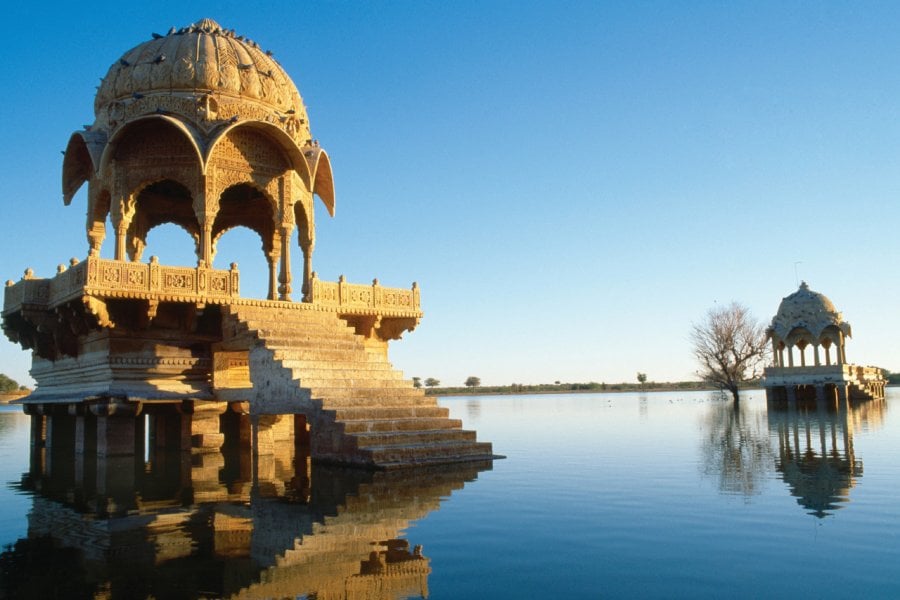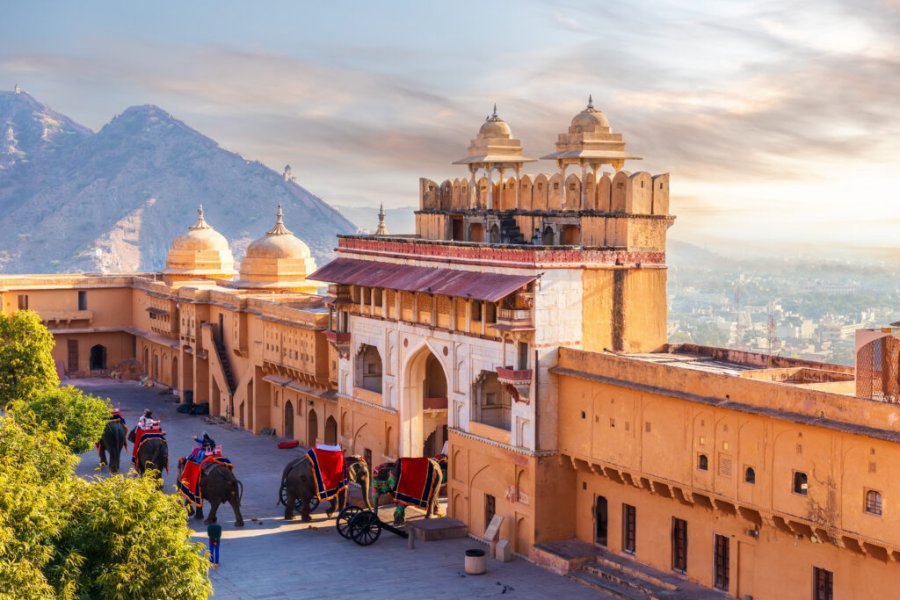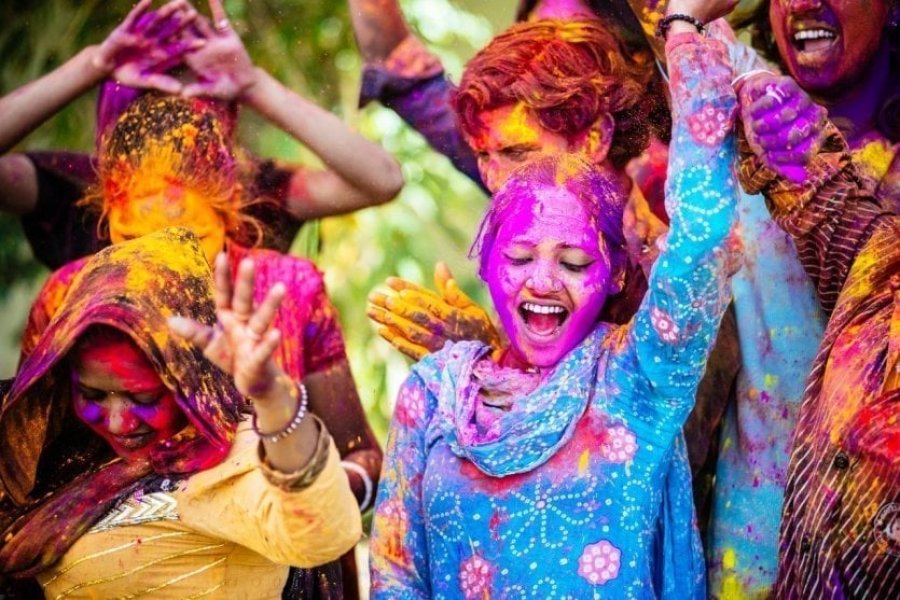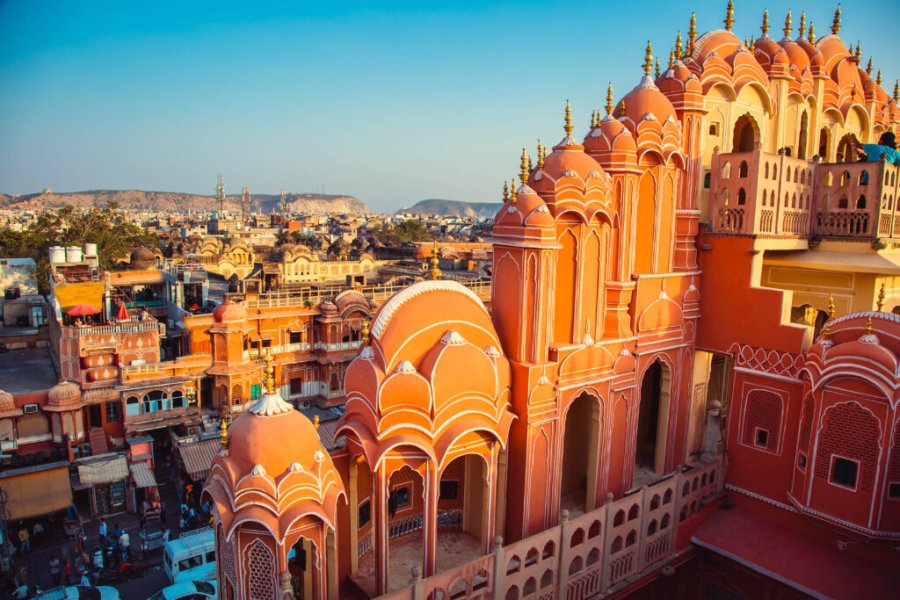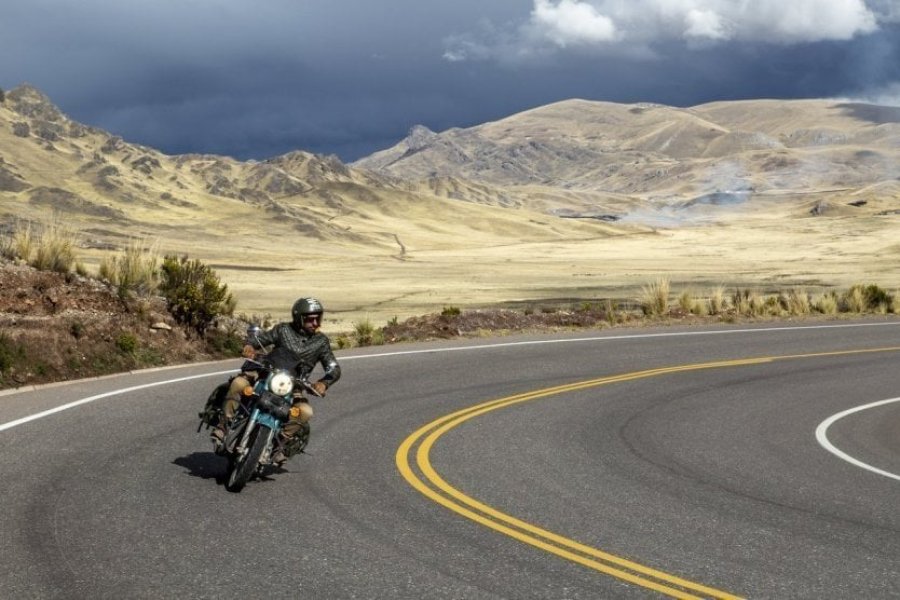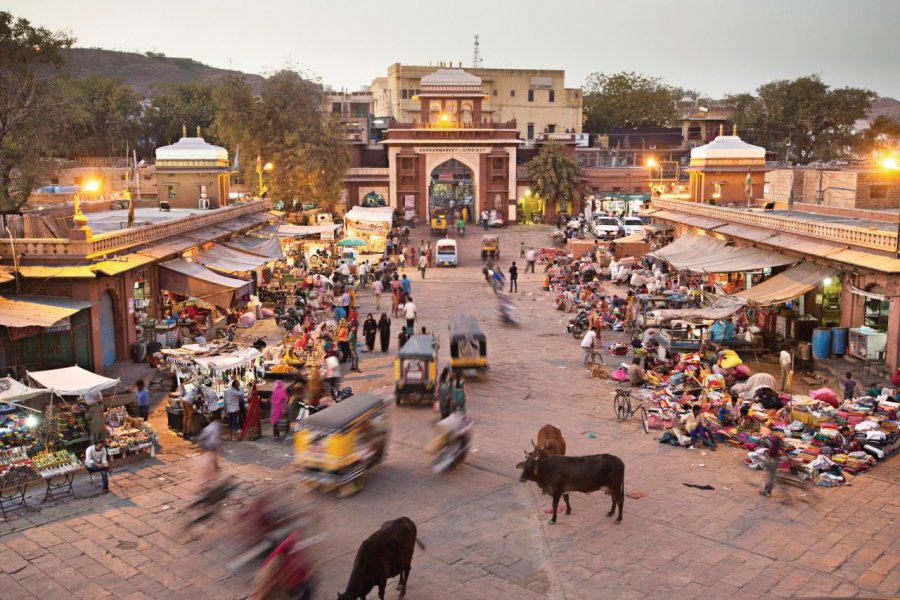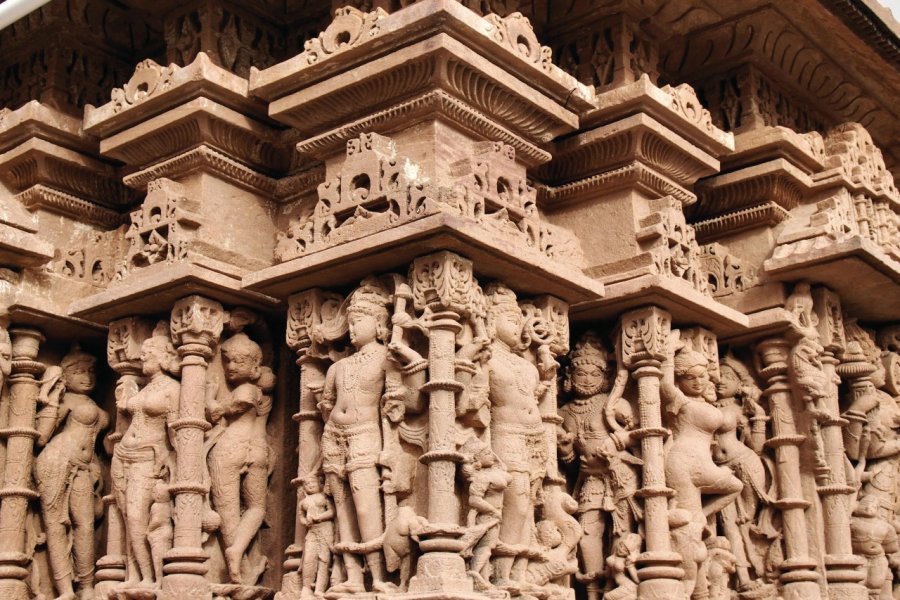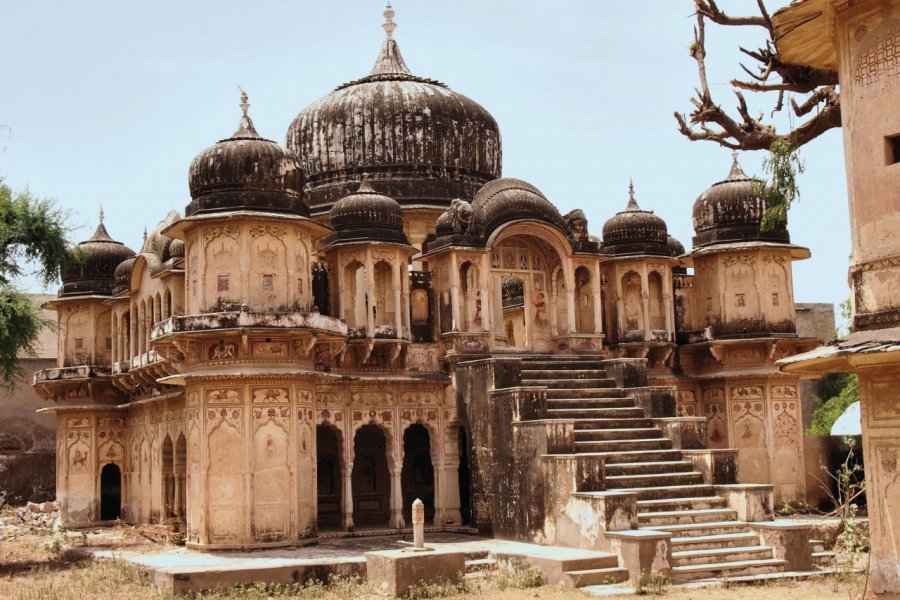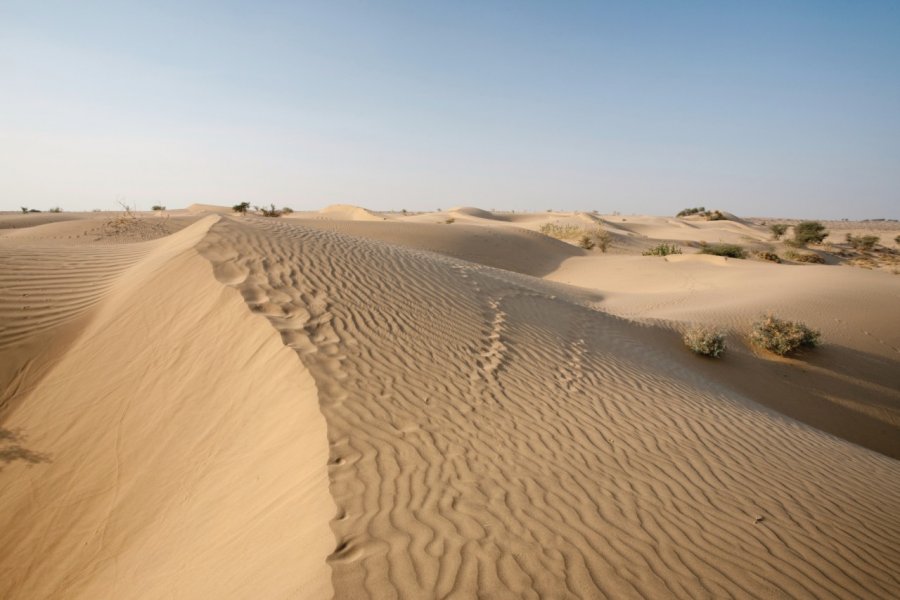Travel guide Rajasthan
In Rajasthan, sumptuous landscapes intermingle, between the ghostly countryside of Shekhawati, the silent desert of Thar, the superb savannah of Ranthambore or the undulating mountains of Aravalli. This region ofNorth India is also of course the road to the palaces of Rajasthan where it is possible to visit and even stay in the magnificent and mythical homes of the maharajas. Rajasthan is also superb cities with evocative names which appear in all the tourist guides of Rajasthan because they are unavoidable: Jaipur, the capital of Rajasthan, which counts a multitude of temples and marvellous palaces, Jaisalmer and its fascinating fortress with the gilded walls, Jodhpur known as the "blue city" because the majority of the houses of its old city are painted of this color... Rajasthan is really a region of India apart which marks forever the travelers who visit it.
What to see, what to do Rajasthan?
-
Book an activity
-
Customized travel
- The most beautiful cities Rajasthan
When to go Rajasthan ?
The best season to go to Rajasthan is from mid-November to mid-March but the high tourist season begins in October and continues into April, that's when the rates are highest in hotels and restaurants. October to April is the low season for these different areas. The low tourist season in Rajasthan begins in mid-April and ends in late September. From May to early July, the heat is stifling in Rajasthan; temperatures average 45°C. Due to the high temperatures, tourists do not visit Rajasthan much during this period. Prices are low but you really need to be brave to endure these temperatures. We advise you not to travel to India at this time.
If you go to Rajasthan in October or November, you will be able to attend the Diwali festival, the most important Hindu festival of the year. At night, candles are lit in front of every house to celebrate the return of Rama to his kingdom of Ayodhya, firecrackers and fireworks are set off, and of course, food and gifts are exchanged.
Holi. And if you go to Rajasthan, in February or March, it is the festival of colors that marks the beginning of spring. Children and adults armed with water pistols filled with colored powder engage in "battles" in the street.
Suggested addresses Rajasthan
Travel Rajasthan
-
Find a hotel
-
Car Rental
-
International e-SIM package
-
Find a local agency
La richesse architecturale et culturelle du Rajasthan permet d'envisager un voyage au long cours. Pour en avoir un aperçu complet, il faut prévoir 3 semaines de circuit. En 2 semaines, vous aurez un aperçu varié, alternant les visites des villes et quelques excursions dans le Rajasthan rural, sans oublier le désert de Thar. Les plus pressés s'assureront une visite des essentiels de l'Etat en une dizaine de jours. Enfin, le Triangle d'Or que constituent Delhi, Agra et Jaipur, peut se faire le temps d'un long week-end. Le meilleur moyen d'entreprendre un circuit est de le faire avec une voiture avec chauffeur. Cela permet de couper les longues bordées, de s'arrêter pour faire des photos ou prendre un chaï et de s'éloigner par moment des sentiers battus. Les petits budgets opteront pour le train, de nuit pour faire quelques économies supplémentaires. Tous les grands sites du Rajasthan sont desservis par des gares.
Find unique Stay Offers with our Partners
How to go Rajasthan
How to go alone
Several airlines fly directly to New Delhi from Europe and the Middle East. Book early for the best prices! Locally, it's fairly easy to arrange travel, as transportation rates are low even at the last minute. Rajasthan is safe, but it is advisable to avoid hanging out on the streets late at night, and for women, it is important to avoid short clothing and to cover your knees and shoulders to avoid being bothered.
How to go on a tour
The tours in Rajasthan are multiple and one can as well choose to make a classic circuit including the principal cities like Jaïpur, Jodhpur and Jaisalmer as to make a thematic stay, cultural for example around the road of the palaces of Rajasthan. Rajasthan being a remote and exotic country, it takes a certain time of acclimatization, without counting the long journeys on the spot; we thus recommend you a circuit of 15 days minimum and not only of 10 days.
How to get around
It is quite easy to travel by air in Rajasthan due to the frequent and regular service to various airports via scheduled and low-cost airlines. India's rail network is huge and well developed, including in Rajasthan. It is a low-cost means of transportation but the trains are often full. Buses also serve Rajasthan well with fares generally equivalent to those of2nd class trains.
Featured articles Rajasthan
Discover Rajasthan
Rajasthan, with its rich history, bears vivid witness to its feudal past, with fortresses and forts everywhere. The maharajas only relinquished their powers in 1971, and fifty years later, their power, wealth and glory are still very much alive. While the region has jumped on the modern bandwagon, its complex traditions remain, creating a deeply rooted, picturesque face. Architectural heritage, religious cults, gastronomic specialties, customs, tribal populations, musical folklore, modes of dress and the organization of society are all facets of a mosaic that is unique in India. Hindu religion plays an important role in the daily lives of the inhabitants, and cows, considered sacred, are present everywhere. They are the object of daily offerings and are pampered in special farms called " gosalas ".
Pictures and images Rajasthan
The 12 keywords Rajasthan
1. #Baori

In Rajasthan, access to water has always been a challenge. Vast reservoirs were dug in or near villages, connected to a spring or designed to collect rainwater. Baoris are huge wells with staircases. They also had a social and religious function. The one in Jodhpur is a fine example.
2. #Chaï

The national drink concentrates the perfumes of spices (ginger, cardamom, pepper...), the sweetness of sugar, the bitterness of tea, the roundness of milk. At the inhabitant's house, in the stores, on the roadside, in the trains..., you can't escape it. In Rajasthan, it is often prepared with buffalo milk, the best.
3. #Chhatri
This ornament is typical of Rajasthani architecture. It consists of a bell tower with 4 or more pillars, topped by an umbrella-shaped dome. It tops palaces, forts and temples built during or after the Mughal period. The chhatri can be a building in itself, as in the case of royal cenotaphs.
4. #Dromaine
The camelid is the best friend of the Rajasthani farmer. This robust animal is able to carry or pull heavy loads, while enduring the heat. It was widely used to pull carts loaded with crops or to move in the desert. It is the subject of festivals and fairs, especially in Pushkar, Bikaner or Jaisalmer.
5. #Haveli

The term refers to a house arranged around one or more courtyards. They belonged to rich merchants or nobles. Rajasthan is dotted with these richly ornamented mansions, some of which have been left to decay. Bikaner and Shekhawati are the best places to appreciate the splendor and marvel at the finesse of the frescoes.
6. #Jali
These screens chiseled in the stone are part of the architectural ornaments imported by the Muslim conquerors from Iran and Afghanistan. They had the virtue of letting the air through and filtering the burning light, projecting their patterns on the floors. They allowed women who were kept away from the world to observe without being seen.
7. #Jauhar
This term illustrates the darkest hours of battles between Rajputs and Mughals. When a fortress fell into enemy hands, the wives of Rajput soldiers would commit suicide. The most famous jauhar in history is said to have led 13,000 women to throw themselves into the flames in the central square of the Chittor fort in 1535.
8. #Jharokha
Typical of the medieval architecture of Rajasthan, this bay window allowed women to see without being seen, sheltered behind a shutter or a curtain. They also allowed archers to place themselves in ambush. From the inside, they form an alcove with a bed. Jaisalmer is famous for its finely crafted jharokhas.
9. #Maharaja
The term refers to a Rajput prince, literally "a great king". His wife is given the title of maharani. The highest title is maharana, which means "king of kings". Only the ruler of Udaipur holds this title. Rajasthan has 18 kings who, although they no longer have legitimate power, perpetuate the transmission of the title.
10. #Ram ram
If " namaste" is the most used formula to greet someone, " ram ram " is the one used in Rajasthan. Literally, it is to invoke Rama, the seventh avatar of Vishnu. If you come across a Krishna worshipper, you can greet him with a " hare hare ". The most polite way to greet someone is with " namaskar" .
11. #Sati
First wife of Shiva, she gave herself death by burning herself on a pyre. She was reincarnated as Parvati. The term also refers to the Hindu custom of a widow immolating herself on the funeral pyre of her husband. The custom was banned in 1829 by the British and continued until 1987 and the sati of Roop Kanwar.
12. #Tika

The tika is a vermilion dot applied in temples to the foreheads of devotees. If a man's forehead is crossed by 3 horizontal stripes, he is a Shivaite, and if the stripes are vertical, he is a Vishnuite. The tika should not be confused with the decorative bindi worn by women, which are small stickers.
You are from here, if...
You eat with one hand, preferablythe right. The left hand is used for impure acts such as personal hygiene.
You remove your shoes before entering a house, temple, mosque or even a store. Make sure your shoes are easy to take off and put back on.
Wear loose-fitting clothes. Respectable women cover their shoulders and legs to the ankles. Men avoid shorts.
Accept curiosity about yourself. Don't be surprised if people stare at you in public places or ask you questions about your origins, social status or religion. Indians are curious.
Don't put your lips on an object intended for several people (glass, bottle, cup...).
You don't systematically thank someone who helps or serves you. The opposite is considered offensive.
You don't indulge in affectionate gestures with your other half in public. Embraces and tender gestures are part of the sexual act.
Other destinations Rajasthan
- Jaisalmer
- Bikaner
- Fatehpur
- Ranakpur
- Jaipur
- Chittorgarh
- Nawalgarh
- Pushkar
- Mandawa
- Jodhpur
- Amber
- Ranthambore National Park
- Khumbhalgarh
- Udaipur
- Ramgarh
- Nathdwara
- Gaitor
- Dunes De Sam
- Bharatpur
- Keoladeo Ghana National Park
- Nahargarh
- Galta
- Jhunjhunu
- Gajner Nature Reserve
- Churu
- Ajmer
- Osyan
- Lake Amar Sagar
- Kuldhara
- Mont Abu

